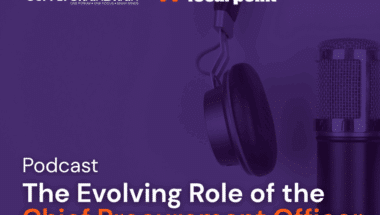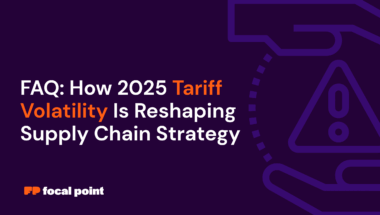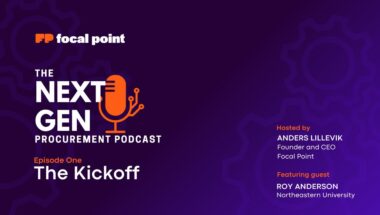How Chief Procurement Officer became one of the most important roles in the C-suite
By: Anders Lillevik, CEO of Focal Point
The last two years have seen rapid digital transformation across nearly every business unit. However, some key business functions have lagged behind, including those most affected by supply chain pressures and other economic consequences of the pandemic. In this five-part series, I’ll offer my thoughts regarding how the role of procurement has evolved for modern businesses, and how new technologies can help organizations find new efficiencies and stay ahead of changing market conditions.
Over the last two years, businesses rapidly transformed their operations to keep pace with the demands and pressures of the COVID-19 pandemic. Digitalization accelerated dramatically, particularly as organizations shifted to remote work and distributed teams. Necessity is the mother of invention, and the various necessities of the pandemic created a need for wide-sweeping improvements in the tools we use to work, communicate and collaborate.
But while many business units leaped forward with regard to their technological solutions, other key functions remained stuck in the past. In particular, many companies’ procurement processes remain largely fragmented across legacy systems, delaying vital operations and preventing teams from gaining full oversight over payments. In most cases where progress was made to meet the new demands, this progression was most likely yet another standalone business process.
As enterprises discover the growing importance of procurement on broader business objectives, C-suite-level discussions are now expanding to include another CPO: the Chief Procurement Officer. This role will be critical as organizations work to gain efficiency and stability in an increasingly unpredictable economic climate.
New realities for Procurement
The pandemic economy was defined largely by broad shifts toward eCommerce, as well as increased spending driven by government stimulus packages. But as the government winds down these support mechanisms, and as consumer behavior moves back towards a mix of in-person and online shopping, organizations are left with less room to maneuver financially.
The combination of growing inflation and a tangled supply chain has raised the stakes for corporate procurement strategies. Businesses must now pay more for everyday goods and services, leaving them with less margin for error when procurement activities do not go as planned. In response, corporate executives are now considering strategic initiatives that could allow them to streamline their efforts.
While economic changes have led to new business realities, many of these challenges have been met with new technology solutions. The CPO now has the vital task of choosing the technologies and approaches that will guide organizations through months of unpredictability. The stakes are high: The right solution will make the difference between whether procurement serves as a revenue saver or a cost center. Platforms that can effectively streamline the three key aspects of procurement — intake, execution and performance management — make it possible for the CPO and other procurement leaders to boost efficiency, improve reliability, and communicate their value to the business.
Increased pressures on Procurement
For massive companies with multi-billion-dollar budgets, the chance to save a few million through a procurement strategy isn’t a top priority. And in a frothy, growing market, even smaller companies are less likely to consider where they may be able to reduce spending and increase efficiency. As we face the reality of an economy with less funding at hand, even large corporations will now need to find opportunities to reduce their expense rates.
Legacy procurement platforms were built for simpler work environments — organizations with straightforward requirements and workforces located on-premises at a single campus. But as our digital workplaces have evolved, these systems have failed to keep pace. In some cases, companies even rely on Excel spreadsheets that must be manually updated across multiple departments. Instead of offering a single view of the company’s payments, this fragmentation leads to increased costs and decreased efficiencies.
C-suite executives and other decision-makers are also navigating new pressures beyond economic changes. In particular, new expectations with regard to Diversity and Inclusion and Environmental Sustainability Goals are changing the ways corporations organize their procurement processes. Recognizing their role in promoting social change, companies are now prioritizing products from diverse suppliers and those with a commitment to sustainability. While the goals are noble, the steps to get there add a new layer of complexity to the situation.
Prioritizing procurement
The only way for organizations to understand their procurement challenges and how to solve them is to gain a complete picture of their transactions across teams and business units. With the C-suite turning its attention to procurement orchestration, newly empowered CPOs must move to adopt technologies that give them a 360-degree view of the organization and its processes. The end result will pay dividends at every level, as the company enjoys the benefits of reduced costs and faster delivery of products and services.
In my next article, I’ll explore some of the most common mistakes made by organizations in their procurement processes, as well as the strongest opportunities to improve ROI through technological upgrades.



